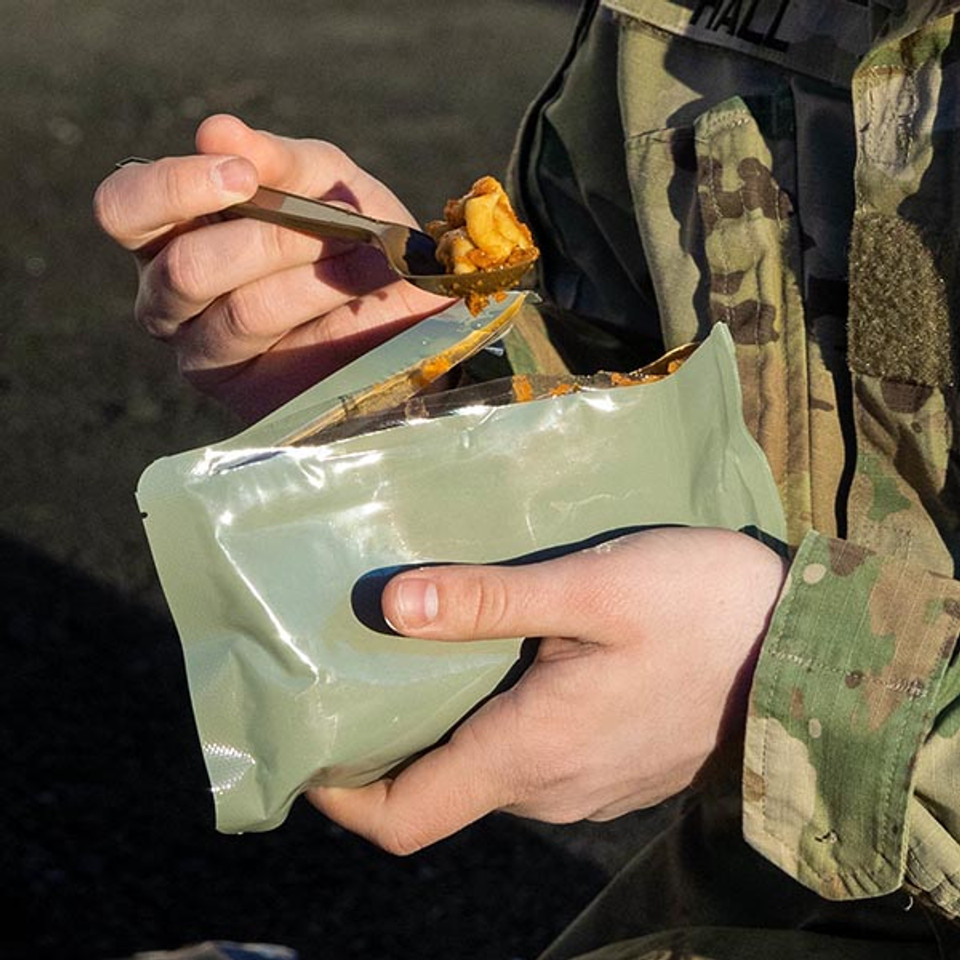Are MREs a Healthy Food Option?
Are MREs Healthy?
Meals, Ready-to-Eat (MREs) have become a popular choice for disaster preparedness due to their convenience, long shelf life, and comprehensive meal packaging. Originally designed to sustain soldiers in the field, MREs are also great for taking on camping, bushcraft, and outdoor trips.
But when it comes to health, how do MREs measure up? Let’s explore their nutritional profile to determine if MREs are healthy and whether they provide nutrition.
Macronutrients: Where Do the Calories in MREs Come From?
Calories in food come from three macronutrients: carbohydrates, proteins and fats. Each of these macronutrients plays a vital role in maintaining bodily functions and supporting physical activity. However, not all calories are created equal—different sources of calories impact your body in various ways. For optimal health and performance, it's essential to maintain a balanced intake of these macronutrients.
When it comes to macronutrient balance, MREs are very healthy. They provide the right balance of macronutrients from quality sources. By contrast, most emergency meals get their calories from refined sugars, cheap carbs, and processed fats, and they typically have almost no protein. There are some exceptions--Mountain House meals contain real meat and loads of protein—but these are more expensive than bulk military MREs.
It varies slightly depending on the menu, but you can expect the following macros from an MRE:
- Carbohydrates: Carbs make up 40-50% of the calories in an MRE. Carbohydrates are crucial for providing quick and sustained energy, essential for maintaining high levels of activity. The carbohydrate sources in MREs include items like pasta, rice, and bread, which are designed to supply a steady energy release.
- Proteins: Protein makes up about 15-20% of the total calories in an MRE. Proteins are essential for muscle repair, growth, and overall bodily functions. MREs contain a variety of protein sources, including meat, poultry, and dairy-based items, which help in maintaining muscle mass and recovery from physical exertion.
- Fats: Fats account for approximately 30-35% of the total calories in MREs. Fats are energy-dense and necessary for absorbing fat-soluble vitamins. They also are important for making food taste good and helping you feel full after eating a meal.
Do MREs Have Nutritional Value?
In addition to providing macronutrients, some MRE items are fortified with vitamins and minerals that soldiers need, such as vitamin A, vitamin C, iron, zinc, calcium, and magnesium. These are known as micronutrients.
Minerals like calcium and iron have a very long (and possibly “forever”) shelf life. However, the same can’t be said for vitamins. Most vitamins are not shelf stable and will rapidly deteriorate in the presence of heat. Because of this, don’t count on MREs to meet your RDA for vitamins.
If you were to eat just MREs for a prolonged period of time, you could suffer from vitamin deficiency. This could result in tiredness, brain fog, reduced immunity, and many other health issues that could compromise your survival in an emergency situation. The same is true of any emergency meal, though.
Sodium Content of MREs
A major issue with military MREs is their high sodium content. MREs typically have 1.6mg to 2.3mg of sodium per gram of food. Eating three MREs per day would provide approximately 19g of sodium, which is well above the FDA’s guidelines of 2.3g per day.
The body excretes sodium during intense activity, so the high sodium content of MREs isn’t a major concern for soldiers. However, it is problematic for civilians—especially those who already have high blood pressure or will be inactive (such as when hunkering down through an emergency).
Fiber Content
Another issue with MREs is that they contain very little fiber, thus earning them the nickname, “Meals, Refusing to Exit.” For short-term emergencies, the low fiber amount isn’t a major health concern, but it is why the military recommends not eating only MREs for more than 21 days straight.
The Verdict?
When it comes to macronutrients, particularly protein, MREs are a healthy choice and offer a much better balanced energy profile than typical emergency meals. However, like most emergency meals, MREs aren’t healthy when it comes to micronutrients, sodium, and fiber.
For short-term emergencies or camping trips, MREs are healthy enough to meet your nutrition and energy needs. However, for long-term preparedness, you should supplement MREs with high-fiber, low-sodium, and nutrient-rich foods like freeze-dried fruits and vegetables and whole grains.
See our selection of MREs and emergency food here.
Resources:
https://www.med.navy.mil/Navy-and-Marine-Corps-Force-Health-Protection-Command/Population-Health/Health-Promotion-and-Wellness/The-MRE-A-Lesson-in-Performance-Nutrition/,https://www.ncbi.nlm.nih.gov/books/NBK220578/,https://www.militarytimes.com/pay-benefits/military-benefits/health-care/2015/03/02/new-site-gives-mre-nutrition-facts/
-

MRE Entree
$4.95 -

-

MRE Entree Special
$1.95







